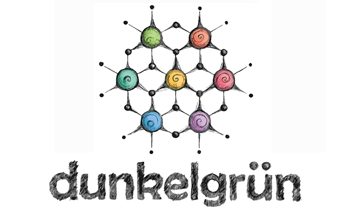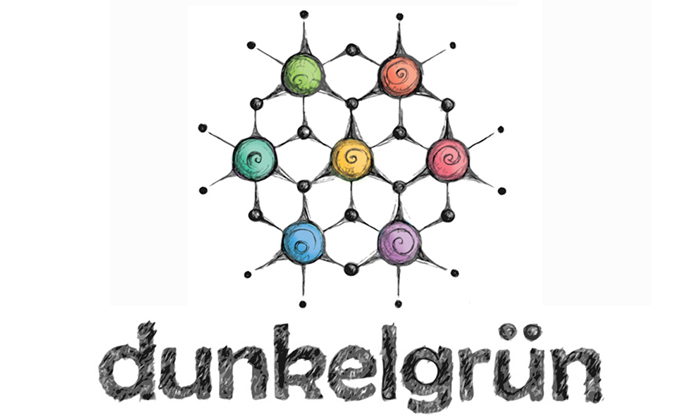This page will be continuously updated with answers to questions that I get often.
Dyeing in General
How can I avoid that my wool will felt if I use hot water to dye it?
Felting occurs when the scales on the wool fibers get caught on each other and connect the fibers irreversibly. The typical conditions for felting are heat and agitation. Another reason for felting can be rapid temperature changes.
Some wool yarns are more likely to felt than others – it depends on the sheep breed and on the diameter of the fiber. Finer fibers (low microns, <25) will felt more easily than coarser fibers (higher microns, >30). When you dye unspun wool, you have to be extra careful because the effects of felting will be much more noticeable than when the wool is already spun into yarn.
That means while dyeing your wool, agitation and temperature shocks should be avoided as much as possible. Place the wool in cool or hand warm water and heat it up slowly. Stir the pot only very gently to turn it around and try to avoid a “rolling boil”: Large bubbles forming at the bottom of the pot and rising to the top can already be enough agitation to felt fine fibers!
When you are done, let the yarn cool down in the dye pot. Even just taking the yarn out of the pot and letting it cool in the air can be enough of a temperature shock to cause felting.
When you finally rinse your yarn, make sure that each rinsing bath has the same temperature, remember also here no temperature shocks!
Superwash wool yarns have been treated to remove (or smoothen) the natural scales on the fibers, which means that they are less prone to felting and are thus more suitable for beginner dyers. Be aware, however, that even superwash treated yarns (especially when eco-friendly treatments have been used) the fibers can still get damaged from extended agitation and heat or temperature shocks!
Natural Dyeing
Which mordant should I use?
The most ubiquitously used mordant for natural dyeing is potassium alum (potassium aluminum sulfate KAl(SO4)2, often found as the dodecahydrate KAl(SO4)2·12H2O). It is inexpensive, non-toxic (it can be a weak skin irritant) and works as a reliable mordant for most natural dyes.
Wikipedia has a great article about this compound: https://en.wikipedia.org/wiki/Potassium_alum
In most countries you can buy alum in pharmacies or drug stores. Other great resources are websites which sell dyeing equipment like here in Germany or here in the US (among many others!).
In my garden I have **plant of your choice** and it has wonderful **color of your choice** flowers – can I dye with it? Can you give me a recipe?
or
I realized that **plant of your choice** produces a **color of your choice** juice – can I dye with it? Can you give me a recipe?
I always encourage you to experiment, because that’s the only way we can gain knowledge about natural dyeing. It is a nice idea to just go outside and pick what you can find (if it is not an endangered or protected plant!) and try to dye with it. But with this approach you have to be prepared to get a lot of unexpected (and depending on your expectations maybe disappointing) results. Many flowers and fruits have intense colors, but these molecules cannot attach to the yarn. That’s why intense blue flowers or pink berries will often just give you grey after washing the yarn…
Recipe suggestion for experiments: If you want to try experimenting with a new plant I recommend you to use alum as the mordant: 15 grams (about 1 tablespoon) per 100g skein of yarn. Dissolve that in a pot containing enough water for your yarn to swim freely. Place the yarn in the pot, heat up gradually and keep at a slight simmer for an hour.
The plant material can be extracted in several ways… let soak in water (maybe with an acid or a base? or try a pot with each?) overnight or simmer for an hour… there are many more options! If your plant produces a lot of small pieces that will be difficult to get out of the yarn, I recommend you to filter it and tie the plant material in a little pouch (old tights or t-shirts are great for that) Then place the mordanted yarn in your dye bath and let simmer or soak. How long? You decide! Take it out and check the color and if you think it needs a bit more, put it back in the dye pot until you are satisfied or think that the color won’t change anymore.
If you want to have at least slightly expectable results, I would recommend you to stick to plants which are known to have been used for dyeing already for centuries. Also here there are a lot of variations from plant to plant and condition to condition, but in the most cases you should at least end up with some color on your yarn.
There are many lists for dye plants out there in the internet, e.g. here (dye garden plant list), here (list of 85 natural colors by allnaturaldyeing.com), on this page (by the Woolery, contains also more info on mordanting etc.), and of course, my favorite free source of information: Wikipedia has a list of common natural dye stuffs sorted by the color of the dye.
Can I use an aluminum pot for natural dyeing if I already use alum as the mordant?
Using an aluminium pot can have an influence on the color even if you use alum to mordant and thus have aluminium atoms in your dye bath anyways. It can darken the color or make it more dull. Most likely it can cause spots on the yarn (like speckles) on the places where the yarn touches the pot. However, this can also be a desired effect!
I have used some aluminum pots (vintage camping pots) and did my first ever dyeing experiments with them. I dyed wool roving with sandal wood and annatto and I observed exactly that: spots of darker color where the wool touched the walls of the pot.
Like with everything when it comes to natural dyeing: You have to experiment and try it to find out if you like it!

